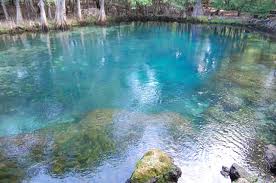Amoeba awareness
During summer months or whenever the weather is really hot,  most people enjoy a nice invigorating swim in a river or spring however there are also some risks associated with swimming in very warm water that everyone should be aware of.
most people enjoy a nice invigorating swim in a river or spring however there are also some risks associated with swimming in very warm water that everyone should be aware of.
There have been several cases in the last few years of people getting infected with this very rare but potential deadly brain-eating parasite Naegleria fowleri. This free-living amoeba causes primary amebic meningoencephalitis (PAM), a disease of the central nervous system and is almost always fatal. According to the CDC there have been 128 PAM infections from 1962 through 2012 with only two survivors. And just recently, we had a case of a 12-year old boy from Florida who contracted it as he was knee-boarding in a water-filled ditch near his home and who sadly did not make it.
Over half of all the reported cases in the United States have occurred in Florida and Texas. This parasite lives naturally in freshwater. It can be found in lakes, rivers, hot springs and canals, ponds and even ditch. Humans become infected when water containing Naegleria fowleri enters the nose, usually while swimming, travels to the brain where it begins to destroy brain tissue. If the infected person can reach the hospital early enough, antibiotics can be used to kill this parasite. According to the CDC, people cannot get infected by drinking contaminated water.
Symptoms of this infection are very similar to bacterial meningitis however the actual (PAM) disease is diagnosed using very specific lab tests available in only a few laboratories in the U.S. which makes it even more difficult to accurately diagnose a patient in time to stop the spread of the disease.
Symptoms starts within the first 5 days and include:
severe frontal headache
fever
nausea and vomiting
confusion
stiff neck
seizures
hallucinations
coma
There is no data as to why certain people get infected while most others do not. There is also no method as of yet to measure the number of ameoba present in the water or any way to control the amount of amoeba in water.
Prevention using common sense seems to be the best approach. This would include:
1. Holding your nose shut or using clips or swim mask
2. Try to keep your head over water
3. Avoid putting your head under water in hot springs and very warm water
4. Avoid water-related activities in warm freshwater during periods of high water temperature and low water levels
5. Avoid digging in, or stirring up, the sediment while taking part in water-related activities in shallow, warm freshwater areas
These are only recommendations but are good to keep in mind next time you go swimming or participate in water-related activities. We need to keep everything in perspective and enjoy our recreational activities but we also need to be aware of the dangers so we can all be safe.
